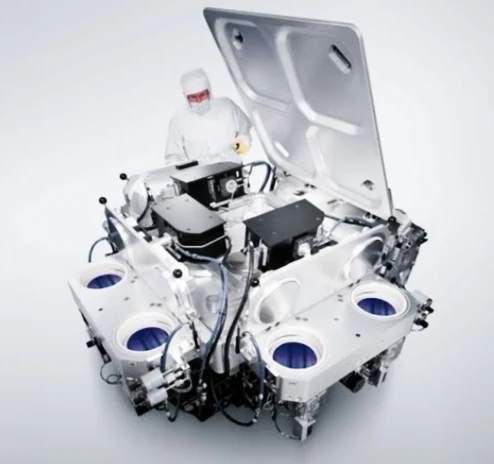MIT Pioneering Nanomedicine Research
The Massachusetts Institute of Technology (MIT) is a leader in nanotechnology research, and this extends to the exciting field of nanomedicine. By engineering materials at the nanoscale (billionth of a meter), researchers are developing innovative tools and techniques to diagnose, treat, and prevent diseases.
Here's a glimpse into some of MIT's groundbreaking nanomedicine research areas:
| Research Area | Description |
|---|---|
| Drug Delivery | Developing nanoparticles that can precisely target diseased cells, minimizing side effects and improving treatment efficacy. |
| Imaging & Diagnostics | Creating nanoscale sensors for early disease detection and monitoring treatment progress |
| Gene Therapy | Designing nanocarriers to deliver gene therapies for genetic disorders and cancer. |
| Neural Interfaces | Building brain-computer interfaces using nanomaterials to help paralyzed patients regain control and treat neurological conditions. |
This is just a sampling of the exciting work underway at MIT. Researchers are constantly pushing the boundaries of nanomedicine, with the potential to revolutionize healthcare.
MIT's Nanomedicine Revolution: Redefining Drug Delivery
Traditional drug delivery methods often lack precision, leading to side effects on healthy tissues. At the forefront of medical innovation, MIT's nanomedicine research is transforming drug delivery with the power of nanotechnology.
The Power of Nanoparticles:
MIT researchers are developing microscopic warriors – nanoparticles – engineered to target specific diseased cells. These nanoparticles, about 100,000 times smaller than a human hair, can be customized for size, surface properties, and cargo.
Here's how these tiny titans revolutionize drug delivery:
- Targeted Delivery: Nanoparticles can be designed to recognize specific biomarkers on diseased cells. Like a lock and key, they bind only to these targets, ensuring the drug reaches the intended location. This minimizes exposure to healthy tissues and reduces side effects.
- Controlled Release: Nanoparticles can be programmed to release their drug cargo at a specific time or in response to a particular trigger. This allows for sustained drug delivery over time, improving treatment efficacy.
- Overcoming Barriers: Certain drugs struggle to reach their target sites due to biological barriers. MIT researchers are developing nanoparticles that can bypass these barriers, ensuring the drug reaches the diseased cells.
Examples of MIT's Pioneering Work:
- Oral Delivery of Nanoparticles: A major breakthrough involved developing nanoparticles that can be delivered orally in pill form. These nanoparticles survive the digestive tract and release their cargo in the bloodstream, offering a more convenient and non-invasive drug delivery method.
- Nanoparticles for Neuroinflammation: Researchers are exploring lipid nanoparticles to deliver RNA therapies that can reduce neuroinflammation, a hallmark of Alzheimer's disease. This approach has shown promise in treating this debilitating condition.
The Future of Drug Delivery with Nanomedicine:
MIT's research holds immense potential for the future of drug delivery. Here's a glimpse of what's on the horizon:
- Personalized Nanomedicines: Nanoparticles can be tailored to a patient's specific needs, leading to personalized treatment plans with minimal side effects.
- Combination Therapies: Nanoparticles can be designed to deliver multiple drugs simultaneously, potentially enhancing treatment efficacy for complex diseases like cancer.
- Theranostics: Nanoparticles can be used for both diagnosis and treatment. Imagine a single nanoparticle that can identify diseased cells and deliver the necessary therapy simultaneously.
MIT's dedication to nanomedicine research is paving the way for a future where drug delivery is precise, efficient, and personalized. This revolutionary approach has the potential to transform medicine and improve the lives of millions.
Illuminating Disease: MIT's Nanomedicine Advancements in Imaging & Diagnostics
Early and accurate diagnosis is the cornerstone of effective disease management. MIT's nanomedicine research is at the forefront of developing innovative tools for disease detection using the power of nanotechnology.
Nanosized Spies: Unveiling the Hidden:
Imagine tiny scouts infiltrating the body, seeking out and identifying disease at its earliest stages. This is the potential of MIT's work on nanobiosensors. These sensors, built on a nanoscale (billionth of a meter), are designed to detect specific biomarkers associated with diseases.
Here's how these nanoscale spies revolutionize diagnostics:
- Unmatched Sensitivity: Due to their small size, nanobiosensors can interact with biomolecules at the cellular level. This allows for highly sensitive detection of disease markers, even in their earliest stages.
- Multifunctional Capabilities: Nanobiosensors can be designed not only to detect specific biomarkers but also to image their location within the body. This comprehensive approach provides valuable insights for diagnosis and treatment planning.
- Non-invasive Detection: Many nanobiosensors have the potential to be used in non-invasive tests like blood draws or urine samples. This reduces discomfort for patients and allows for earlier and more frequent screening.
Examples of MIT's Pioneering Work:
- Early Cancer Detection: Researchers are developing nanoparticles that target specific proteins associated with cancer cells. These nanoparticles can be used in imaging techniques to identify tumors at an early stage, allowing for prompt intervention. [1]
- Nanoprobes for Brain Imaging: MIT scientists are creating nanoprobes that can illuminate specific brain activity. This technology has the potential to revolutionize the diagnosis of neurological disorders like Alzheimer's and Parkinson's disease.
The Future of Diagnostics with Nanomedicine:
The potential of nanomedicine in diagnostics is vast. Here's a look at what the future holds:
- Point-of-care Diagnostics: Imagine a simple, handheld device that can diagnose diseases using a drop of blood. Nanobiosensors pave the way for such point-of-care diagnostics, enabling faster and more accessible healthcare.
- Personalized Medicine: Diagnostics with nanomedicine can provide a more personalized picture of a patient's disease. This allows for tailored treatment plans based on individual needs.
- Theranostics: Nanoparticles can be designed to combine diagnostic and therapeutic functions. This theranostic approach allows for disease detection and treatment to occur simultaneously.
MIT's groundbreaking research in nanomedicine diagnostics is illuminating the path towards earlier disease detection, leading to more effective treatment and improved patient outcomes.
Redefining Repair: MIT's Nanomedicine Revolution in Gene Therapy
Gene therapy holds immense promise for treating genetic disorders and even some cancers by correcting faulty genes. However, delivering gene therapies effectively remains a challenge. This is where MIT's nanomedicine research steps in, offering innovative solutions using nanocarriers.
Nanosized Delivery Vehicles for Genetic Cargo:
Imagine microscopic shuttles specifically designed to deliver healthy genes to targeted cells. This is the essence of MIT's work on nanocarriers for gene therapy. These nanocarriers, built using nanoparticles, act as vehicles that encapsulate therapeutic genes and transport them precisely to diseased cells.
Here's how these nanoscale shuttles are revolutionizing gene therapy:
- Targeted Delivery: Nanocarriers can be engineered to recognize specific receptors on diseased cells. This targeted approach ensures that the therapeutic genes reach the intended location, minimizing unintended effects on healthy cells.
- Enhanced Gene Expression: Nanocarriers can be designed to protect the therapeutic genes from degradation within the body. This allows for efficient delivery and expression of the genes within the target cells.
- Overcoming Barriers: Certain gene therapies struggle to reach their target cells due to biological barriers. MIT researchers are developing nanocarriers that can bypass these barriers, ensuring successful gene delivery.
Examples of MIT's Pioneering Work:
- Nanoparticles for Cystic Fibrosis: Researchers are developing lipid nanoparticles to deliver functional copies of the CFTR gene, which is mutated in cystic fibrosis patients. This approach has the potential to treat the underlying cause of this debilitating disease.
- CRISPR with Nanocarriers: MIT scientists are exploring the use of nanocarriers to deliver CRISPR gene editing tools. This powerful combination could allow for precise correction of faulty genes, leading to potential new treatments for a wide range of genetic disorders.
The Future of Gene Therapy with Nanomedicine:
The possibilities of nanomedicine in gene therapy are vast. Here's a glimpse into the future:
- Universal Nanocarriers: Developing versatile nanocarriers that can be adapted to deliver different types of gene therapies could streamline treatment development.
- Gene Silencing: Nanocarriers can be used to deliver therapeutic molecules that can silence unwanted genes, potentially leading to treatments for various diseases.
- Personalized Gene Therapy: Nanomedicine can pave the way for personalized gene therapy approaches, tailored to a patient's specific genetic makeup.
MIT's groundbreaking research in gene therapy with nanomedicine offers exciting possibilities for correcting faulty genes and treating previously untreatable diseases. This revolutionary approach holds immense potential for improving human health and well-being.
Bridging the Gap: MIT's Nanomedicine Advancements in Neural Interfaces
The human brain is the most complex organ in our body, and understanding its workings remains a scientific frontier. Neural interfaces, devices that bridge the gap between the brain and external devices, hold immense promise for revolutionizing medicine. At the forefront of innovation, MIT's nanomedicine research is developing next-generation neural interfaces using nanomaterials.
Nanotech for Neural Connections:
Imagine tiny bridges built on a nanoscale, creating a seamless connection between the brain and external technologies. This is the vision behind MIT's work on nanomaterial-based neural interfaces. These interfaces offer several advantages over traditional approaches:
- Enhanced Biocompatibility: Traditional neural interfaces can cause tissue damage and inflammation. Nanomaterials can be engineered to be more biocompatible, minimizing these risks and allowing for long-term implantation.
- Higher Resolution: Nanomaterials can be used to create highly sensitive interfaces that can detect and record neural signals with greater precision. This allows for a more nuanced understanding of brain activity.
- Targeted Interactions: Nanoparticles can be designed to interact with specific types of neurons, enabling researchers to focus on particular brain regions or functions.
Examples of MIT's Pioneering Work:
- Brain-Computer Interfaces (BCIs): Researchers are developing BCIs that use nanomaterials to allow paralyzed patients to control prosthetic limbs or communication devices with their thoughts.
- Treating Neurological Disorders: Nanoparticle-based interfaces have the potential to treat neurological disorders like Parkinson's disease by stimulating specific brain regions.
The Future of Neural Interfaces with Nanomedicine:
The potential of nanomedicine in neural interfaces is vast. Here's a look at what the future holds:
- Restoring Lost Function: Neural interfaces could allow patients with spinal cord injuries or neurological disorders to regain lost motor function or sensory perception.
- Brain-Machine Interfaces (BMIs): Nanotech-based BMIs could create a more seamless connection between the brain and computers, potentially revolutionizing fields like communication and entertainment.
- Mapping the Brain: Advanced neural interfaces could provide unprecedented insights into brain function, accelerating our understanding of this complex organ.
MIT's groundbreaking research in neural interfaces with nanomedicine is pioneering a new era of brain-computer interaction. This technology has the potential to improve the lives of millions by restoring lost function, treating neurological disorders, and furthering our understanding of the human brain.







